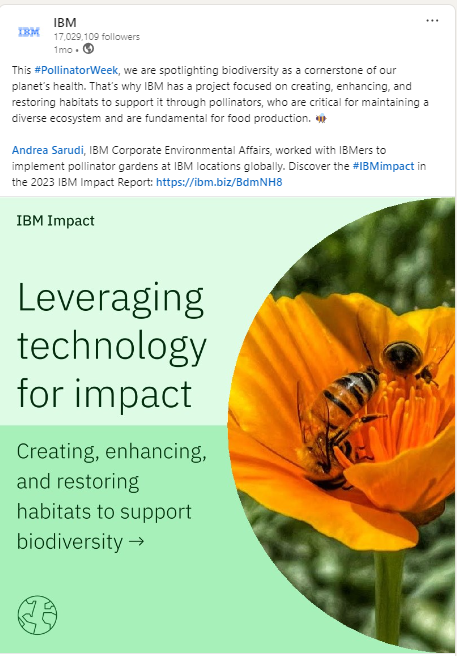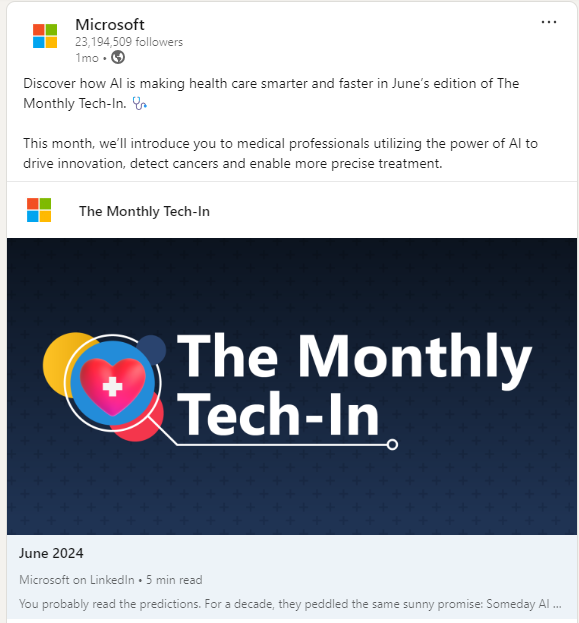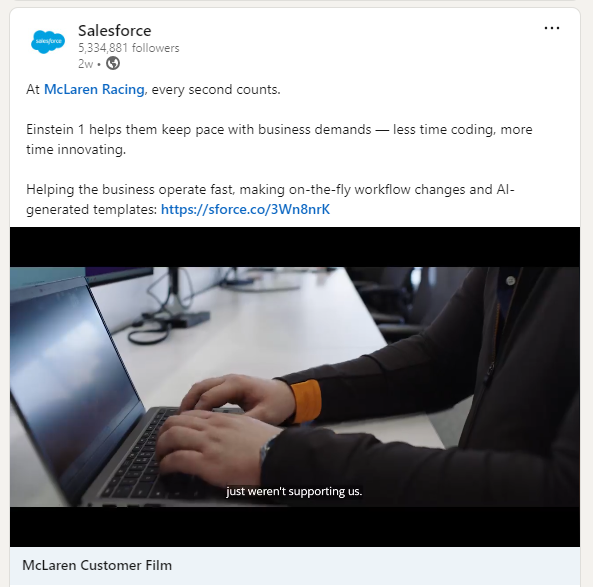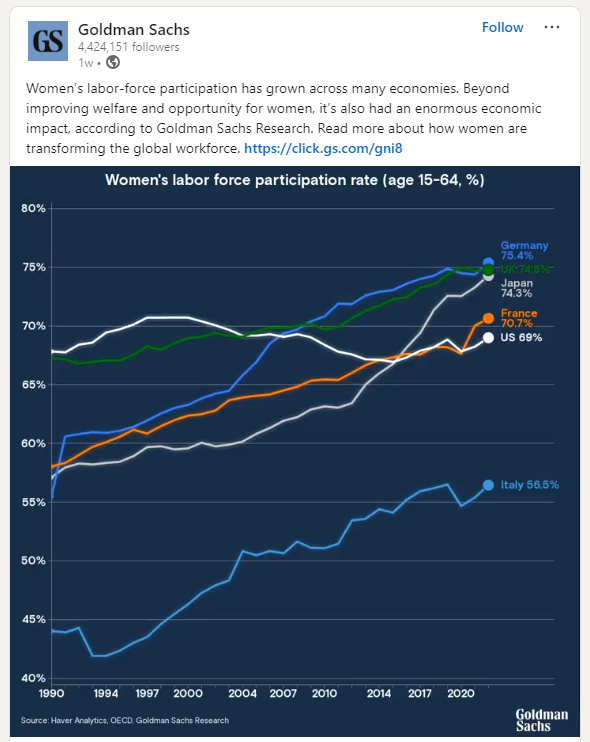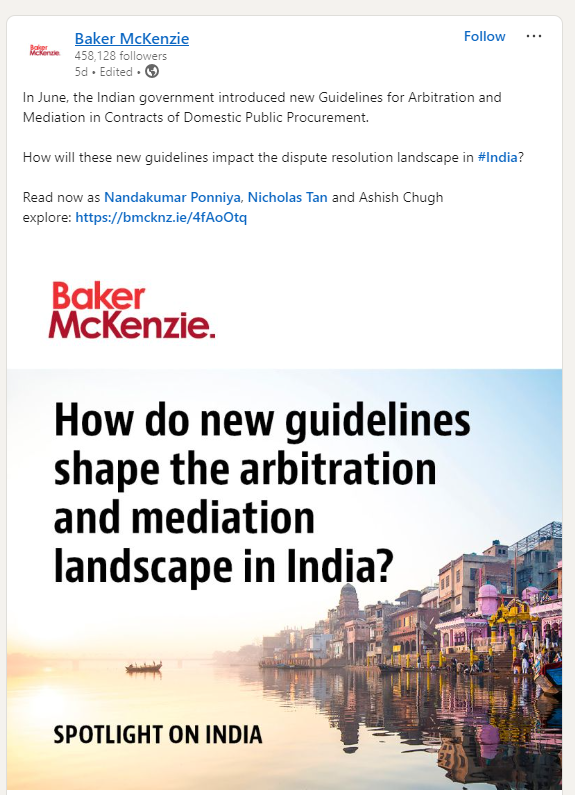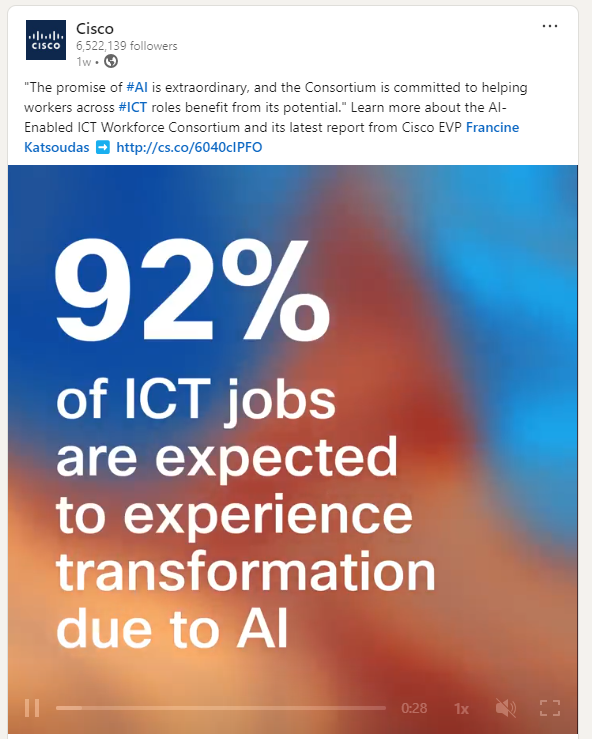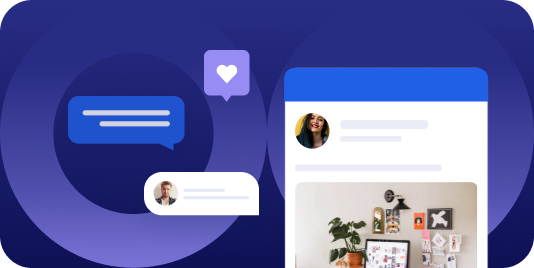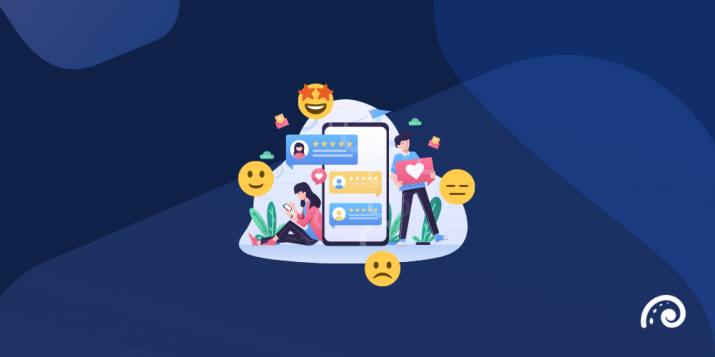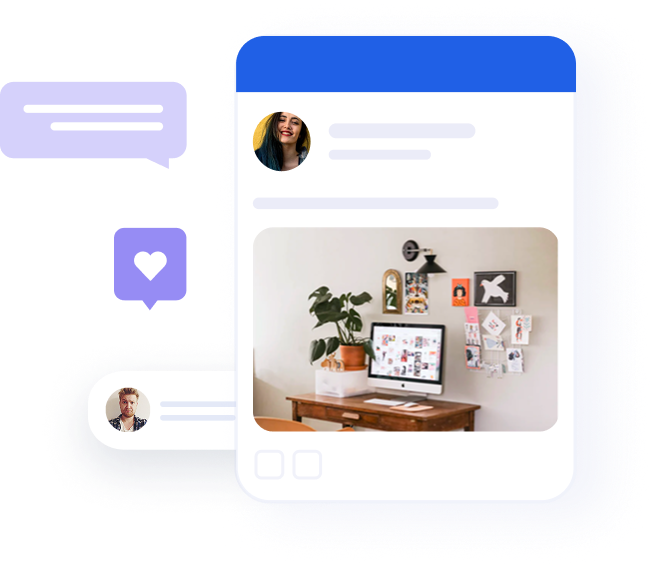
One company page, multiple industries: Conquering LinkedIn’s content conundrum
Table of contents
- Understanding LinkedIn’s targeting capabilities
- Benefits of a single company page with targeted content
- Drawbacks of a single company page
- Multiple LinkedIn company pages benefits and drawbacks
- Best practices for categorizing posts on a single LinkedIn page
- Best practice LinkedIn pages with great content and engagement
- Best practice- Multiple LinkedIn pages for different industries
- Best practice LinkedIn pages in financial services, Legal firms, and technology firms
- Summary
- Conclusion
In B2B social media marketing, businesses continually seek innovative ways to engage their diverse audience segments. LinkedIn, a leading platform for B2B interactions, provides robust tools for targeting specific industries and personas. This capability is valuable for companies serving multiple industries, allowing them to maintain a single company page while delivering tailored content to various segments.
Here are some strategies for effectively categorizing posts for different industries on a single LinkedIn company page. We will also review the pros and cons of maintaining multiple pages versus a unified page with targeted content.
Understanding LinkedIn’s targeting capabilities
LinkedIn offers good tools for targeting posts to specific audiences. By leveraging these tools, companies can ensure their content reaches the most relevant followers based on industry, job function, seniority, and location. These tools exist for paid campaigns and for organic posting. Here’s how you can categorize and target your posts effectively:
Audience Segmentation: LinkedIn allows you to define your audience for each post. You can specify criteria such as industry, job title, company size, and more. By understanding your followers’ demographics, you can create segments that reflect their diversity.
Content Customization: Once you have identified your audience segments, the next step is to create content tailored to each segment’s needs and interests. This involves developing industry-specific insights, addressing unique challenges, and highlighting relevant solutions.
Post Targeting: When publishing a post, use LinkedIn’s targeting options to select the appropriate audience segment. This ensures that your content appears in the feeds of users who are most likely to find it valuable.
Analytics and Feedback: You can review the performance of your targeted posts using LinkedIn’s analytics tools. Pay attention to engagement metrics such as likes, comments, shares, and click-through rates. Use this data to refine your targeting strategy and content approach.
Benefits of a single company page with targeted content
Maintaining a single LinkedIn company page with targeted content offers several advantages:
- Unified Brand Presence: A single company page helps maintain a consistent brand identity. This is important for building brand recognition and trust among your audience.
- Efficient Management: Managing multiple company pages can be time-consuming and complex. With a single page, your social media team can focus on creating high-quality content without the administrative burden of handling multiple accounts.
- Comprehensive Analytics: Having all your content under one roof provides a holistic view of your engagement metrics. This makes it easier to analyze overall performance and make data-driven decisions.
- Enhanced Follower Growth: A unified page can attract followers from different industries, contributing to a more diverse and engaged audience. As your follower base grows, so does the potential reach of your posts.
- Cost-Effective: Managing a single company page is generally more cost-effective than maintaining multiple pages. This allows you to allocate resources more efficiently, investing in content creation and promotional activities.
Recommended for further reading
Drawbacks of a single company page
Despite the advantages, there are also challenges associated with maintaining a single company page:
Complexity in Content Management: Creating and managing targeted content for multiple segments requires careful planning and execution. Ensuring that all segments receive equal attention and relevant content can be challenging.
Risk of Overlapping Content: There is a potential risk of content overlap, where posts intended for one segment might also be seen by another segment, leading to confusion or disinterest.
Diluted Engagement: With a diverse audience, achieving high engagement rates on all posts can take time. Some segments may feel less engaged if they perceive that the content is not tailored to their needs, and overall page engagement may seem lower.
Multiple LinkedIn company pages benefits and drawbacks
In contrast to a single company page, some businesses create multiple LinkedIn pages to cater to different audiences. Here are the pros and cons of this approach:
Benefits
Tailored Brand Experience: Each page can be customized to reflect the unique branding and messaging for specific industries or business units, creating a more personalized experience for followers.
Focused Content: With dedicated pages, content can be highly targeted and relevant to each audience segment’s specific interests and needs. This can lead to higher engagement rates and stronger connections.
Clearer Analytics: Separate pages allow for more straightforward tracking of engagement metrics and performance data for each audience segment. This can provide clearer insights into what works best for each group.
Drawbacks
Increased Management Effort: Managing multiple pages requires additional time and resources. This includes creating content, responding to comments, and analyzing performance for each page.
Potential Brand Fragmentation: Maintaining multiple pages can sometimes lead to inconsistent branding and messaging. This can confuse followers and dilute the overall brand identity.
Resource Allocation: Dividing resources across multiple pages may result in each page receiving less attention and investment. This can impact the quality and frequency of content.
Best practices for categorizing posts on a single LinkedIn page
To maximize the benefits of a single LinkedIn company page while effectively targeting different industries, consider the following best practices:
Detailed Audience Research: Conduct thorough research to understand your audience segments’ demographics, preferences, and pain points. This will inform your content strategy and ensure relevance.
Content Calendar: Develop a content calendar that includes posts for each audience segment. This will help you maintain a balanced content mix and ensure that all segments are regularly engaged.
Diverse Content Formats: Use a variety of content formats, such as articles, infographics, videos, and case studies, to cater to different preferences and enhance engagement.
Clear Targeting Criteria: When publishing posts, use clear and specific targeting criteria to reach the right audience. Avoid broad targeting that may dilute the relevance of your content.
Engagement and Interaction: Actively engage with your audience by responding to comments and questions. Personalized interactions can strengthen relationships and foster a sense of community.
Regular Performance Reviews: Continuously monitor the performance of your posts and adjust your strategy based on analytics. Identify what works best for each segment and refine your approach accordingly.
Best practice LinkedIn pages with great content and engagement
Several companies have excelled at using LinkedIn to reach diverse industry audiences effectively. Here are some companies known for their great content and engagement and their strategies for posting content tailored to different industries.
1. IBM ~17M followers
IBM is a global technology and consulting company serving various industries, including healthcare, finance, and education. Its LinkedIn strategy is exemplary in terms of content quality and audience engagement.
Best Practices:
Segmented Content: IBM frequently shares industry-specific content such as case studies, whitepapers, and reports. For example, they publish posts tailored to healthcare professionals about advancements in medical technology and AI in diagnostics.
Thought Leadership: They position themselves as thought leaders by sharing insights from industry experts, participating in discussions about future trends, and posting research findings.
Engagement: IBM actively engages with its audience by responding to comments and hosting interactive content like polls and Q&A sessions.
IBM is spotlighting biodiversity as a cornerstone of the planet’s health. Restoring habitats to support it through pollinators is critical for maintaining a diverse ecosystem and is fundamental for food production. 🐝 Targeted to Environmental Affairs professionals.
2. Microsoft ~23.1M followers
Overview: Microsoft serves various sectors, including enterprise IT, education, and gaming. Their LinkedIn page is a great example of managing a diverse audience with targeted content.
Best Practices:
Targeted Content Strategy: Microsoft shares posts tailored to different industry segments, such as IT solutions for enterprise clients, educational tools for educators, and product updates for the gaming community.
Engaging Multimedia: Microsoft uses a mix of articles, videos, and infographics to cater to different content preferences.
Industry-Specific Pages: Besides its main LinkedIn page, Microsoft maintains separate pages like Microsoft Education to focus more intensively on specific audiences.
Example Post: AI is making health care smarter and faster – Targeted to the healthcare industry
3. Salesforce ~5.3M followers
Overview: Salesforce, a leading customer relationship management (CRM) platform, engages with multiple industries, including retail, healthcare, and financial services, through its LinkedIn page.
Best Practices:
Personalized Content: Salesforce publishes content that speaks directly to the challenges and solutions relevant to different sectors, such as customer engagement strategies for retail or compliance solutions for financial services.
Customer Stories: They frequently share success stories and testimonials from clients in various industries, demonstrating the real-world application of their products.
Interactive Webinars and Events: Salesforce hosts webinars and virtual events tailored to specific industries they promote on LinkedIn.
Example Post: Helping the business operate fast, making on-the-fly workflow changes and AI-generated templates: Targeted to Business Operations professionals.
Best practice- Multiple LinkedIn pages for different industries
General Electric (GE) ~ 4.9M followers
Overview: General Electric (GE) is a diversified company with operations spanning various sectors, including healthcare, aviation, power, and renewable energy. To effectively cater to these diverse audiences, GE maintains multiple LinkedIn pages focused on their distinct business units.
Best Practices:
Dedicated Pages for Each Division: GE has separate LinkedIn pages for GE Healthcare, GE Aviation, GE Power, and GE Renewable Energy. Each page is tailored to the specific interests and needs of its audience.
Focused Content Strategy: Each LinkedIn page shares highly relevant content, such as technical articles, product updates, industry insights, and case studies that resonate with their particular industry segment.
Brand Consistency: Despite having multiple pages, GE maintains consistent branding and messaging across all their LinkedIn profiles, ensuring a cohesive overall brand identity.
Example Pages:
GE Healthcare ~ 2.2M followers; Shares posts about medical imaging, patient care solutions, and healthcare technology advancements. It engages healthcare professionals with detailed reports, expert opinions, and success stories from hospitals and clinics.
GE Aerospace ~1.2M followers; Focuses on content related to aerospace innovation, airline partnerships, and advancements in aviation technology. It engages aviation professionals and enthusiasts with industry news, technical papers, and event updates.
GE Renewable Energy ~ 1.08M followers; Posts about sustainable energy solutions, wind, and solar power innovations, and the future of renewable energy. They target industry stakeholders, policymakers, and environmental advocates with informative articles and project highlights.
Best practice LinkedIn pages in financial services, Legal firms, and technology firms
To illustrate how companies from different sectors effectively manage their LinkedIn presence, let’s explore examples from financial services, legal firms, and technology firms. These examples highlight best practices in content creation, audience engagement, and the strategic use of LinkedIn’s targeting capabilities.
Financial Services: Goldman Sachs ~4.4M followers
Overview: Goldman Sachs, a leading global investment banking, securities, and investment management firm, effectively uses LinkedIn to engage with diverse audience segments, including clients, potential clients, job seekers, and industry professionals.
Best Practices:
Thought Leadership: Goldman Sachs shares insightful articles, research reports, and market analyses that appeal to financial professionals and investors.
Client Stories and Case Studies: They frequently post success stories and case studies highlighting their expertise in helping clients achieve their financial goals.
Educational Content: The firm provides webinars, videos, and articles on financial literacy, investment strategies, and market trends.
Example Post: Women’s Labor force Participation Trends.
Legal Firms: Baker McKenzie ~458K followers
Overview: Baker McKenzie, a multinational law firm, uses its LinkedIn page to share content relevant to various legal and business sectors, engaging clients, potential clients, and legal professionals.
Best Practices:
Industry-Specific Insights: The firm posts legal updates and insights tailored to specific industries such as healthcare, technology, and finance. This includes articles on regulatory changes, compliance requirements, and industry-specific legal challenges.
Thought Leadership: Baker McKenzie shares thought leadership pieces, including interviews with partners, webinars, and whitepapers on emerging legal issues and global trends.
Client Engagement: They engage with their audience by responding to comments, hosting live Q&A sessions, and providing personalized responses to legal inquiries.
Example Post: A spotlight on India about arbitration and mediation guidelines
Technology Firms: Cisco ~6.5M followers
Overview: Cisco, a global leader in networking and IT, manages a diverse audience that includes IT professionals, business leaders, and technology enthusiasts. Their LinkedIn strategy is focused on delivering content that addresses the needs of these varied segments.
Best Practices:
Targeted Content: Cisco creates and shares content tailored to specific industries, such as healthcare IT, financial services, and education technology. It provides case studies, product updates, and industry news that resonate with these audiences.
Multimedia Engagement: The company uses various content formats, including videos, infographics, and interactive posts, to engage its audience and keep the content dynamic and interesting.
Community Building: Cisco actively participates in LinkedIn groups and discussions, fostering a sense of community among its followers. It also highlights customer stories and testimonials to build trust and credibility.
Example Post: A report about the promise of AI
Example of a Company with Multiple LinkedIn Pages for Different Industries
Deloitte -16.2M followers
Overview: Deloitte, a global professional services network, operates multiple LinkedIn pages to cater to its diverse service lines and industry segments. These pages include Deloitte Consulting, Deloitte Tax, and Deloitte Digital.
Best Practices:
Focused Content Strategy: Each LinkedIn page is dedicated to specific service lines and industry sectors, ensuring highly relevant and specialized content for each audience. For example, Deloitte Tax focuses on tax-related updates and insights, while Deloitte Digital shares digital transformation and technology content.
Industry-Specific Pages: Separate LinkedIn pages allow Deloitte to target its content more effectively and engage with followers interested in specific topics or services.
Unified Branding: Despite having multiple pages, Deloitte maintains a consistent brand identity and messaging across all their LinkedIn profiles, ensuring a cohesive overall presence.
Example Pages:
Deloitte Insights 128K: Deloitte Insights equips future-focused leaders with proprietary research and deep analysis to navigate what’s next. From articles to infographics, research reports to videos and podcasts, we address top business challenges and opportunities, delivering fresh ideas, exclusive data, and actionable insights.
Deloitte Tax has 18K followers: This page focuses on global forces that fundamentally shift how the tax function operates, helping tax leaders become strategic advisors. It connects followers to expertise, capabilities, technology, and innovative ideas.
Deloitte Government & Public Services 27K followers: Covers topics related to Government & Public Services practice their people, ideas, and technologies connect to impact and help government, higher education, and nonprofit leaders achieve their missions, implement programs, and improve outcomes for the people they serve.
Summary
Effectively managing a LinkedIn company page that caters to multiple industries requires a strategic approach to content creation and audience engagement. Companies like IBM, Microsoft, and Salesforce have demonstrated how to successfully engage diverse audiences through targeted, relevant content on a single page. On the other hand, General Electric provides an excellent example of using multiple LinkedIn pages to cater to distinct industry segments, allowing for more focused and specialized content.
Goldman Sachs, Baker McKenzie, and Cisco demonstrate the power of a unified LinkedIn page with industry-specific targeting. At the same time, Deloitte showcases the benefits of maintaining multiple pages to cater to different service lines and industry sectors. By adopting best practices from these companies, you can enhance your LinkedIn strategy, drive engagement, and achieve your business objectives.
By understanding your audience, leveraging LinkedIn’s targeting capabilities, and consistently delivering high-quality, relevant content, your company can build a strong LinkedIn presence that drives engagement and supports your business objectives. Whether you maintain a single page with targeted posts or multiple pages for different industries, the key is to stay informed, be adaptable, and continuously refine your strategy based on performance insights.
Conclusion
Effectively categorizing posts for different industries on a single LinkedIn company page can be a powerful strategy for businesses looking to engage a diverse audience. By leveraging LinkedIn’s targeting capabilities, companies can deliver relevant content to specific segments while maintaining a unified brand presence. While there are challenges associated with this approach, the benefits of streamlined management, comprehensive analytics, and enhanced follower growth often outweigh the drawbacks.
On the other hand, maintaining multiple LinkedIn pages may be suitable for companies with distinct business units or highly varied audiences. This approach allows for more focused content and tailored brand experiences but requires additional resources and careful management to avoid brand fragmentation.
Ultimately, the choice between a single company page and multiple pages depends on your business’s overall setup into business units, go-to-market teams and marketing strategy.
